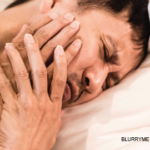Infections, such as periodontal disease and periapical periodontitis, are other known risk factors.46 Periodontal disease-related bacteria have been isolated from necrotic bone in 53% of MRONJ patients; these include Prevotella, Porphyromonas, Fusobacterium, Peptostreptococcus, Streptococcus sp and Eikenella.47 The presence of these bacteria and their relationship with MRONJ remain unclear. Infections are common in the oral cavity, and only a very thin mucosal barrier separates oral bacteria from the underlying bone. This may explain why such osteonecrosis has been reported only rarely at other bony sites, such as the auditory canal and the finger, and even then, always with concomitant MRONJ.48 Denture wearers are at a higher risk for MRONJ when exposed to zoledronic acid, possibly related to trauma of the denture on delicate mucosa (OR = 4.9).49 MRONJ seems to be more prevalent in women, most likely because of the higher prevalence of the underlying condition for which they receive bisphosphonates (e.g., osteoporosis and metastatic breast cancer). Corticosteroid use has also been associated with an increased risk for MRONJ.46,50
Clinical Findings & Diagnosis
The American Association of Oral and Maxillofacial Surgery (AAOMS) defines MRONJ on the basis of three criteria:
- Current or previous treatment with anti-resorptive or anti-angiogenic agents;
- Exposed bone or bone that can be probed through an intraoral or extraoral fistula in the maxillofacial region that has persisted for longer than eight weeks; and
- No history of radiation therapy to the jaws or obvious metastatic disease to the jaws.
Patients present with non-healing extraction sockets with exposed bone, or exposed bone on the mylohyoid ridge, tori, exostoses or elsewhere (see Figures 1 & 2). The mandible is involved more often than the maxilla (73% vs. 22.5%), and patients experience jaw pain in 64–82% of cases.50,51 Some patients may also develop traumatic ulcers of the tongue from sharp bone edges.
According to the AAOMS, MRONJ is classified into five stages (see Table 1).5 Many maxillary lesions readily become Stage 3, because the posterior teeth lie very close to the sinus, separated only by a thin plate of bone that is easily breached by MRONJ (see Figures 3A–B).
If one presumes that many cases of MRONJ start deep within the bone (osteonecrosis of the jaw, bisphosphonate osteonecrosis of the jaw, bisphosphonate-related osteonecrosis of the jaws and anti-resorptive osteonecrosis of the jaws), exposure of bone is a late stage of this condition. As such, a Stage 0 form of MRONJ (sometimes referred to as non-exposed MRONJ) is recognized where there is no exposed bone, but clinical findings strongly suggest the presence of intra-bony MRONJ, such as extremely loose teeth, sinus tracts, pain disproportionate to the degree of dental disease present, and radiographic findings of moth-eaten bone and sequestra.52 This may involve 14–29% of cases.51,53


